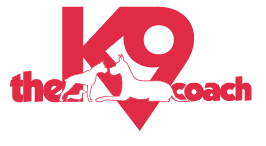How To Stop Dog Jumping Fence
I am often asked by clients how to stop the dog from jumping the fence or how to just keep the dog in the yard when they have no fence. The approach to both is the same.
The short answer is a) leash him up or b) supervise / don't leave unattended.
But where is the freedom in that?
Many times owners with no fence at all restrict the dog to a life on the leash. And they never get a chance to run full out, zoomie through the yard and burn off energy. For the athletic breed and young puppies -- this is a necessary outlet for them.
Where there is a fence, sometimes there are even some dogs that will give the owner the proverbial flip off on the way over the fence even if they were just engaged in a rousing game of fun. Some dogs are really going to be driven by arousal and fun on the other side.
We work a lot with client using the ecollar as a deterrent to jumping the fence. And yes, I'd rather have a significant consequence for the dog that I control for jumping the fence, than him getting injured, injuring something / someone, etc. Life is filled with consequences for bad decisions and bad behavior -- I'd rather be the one controlling it.
So how do we create success in this area.
First you teach.
Boundary tips
Setup the flag markers just like you would if invisible fencing had been installed. About 18" inside your fence line. About 18" apart.
Walk the perimeter with your dog on leash daily for several 4-5 days. If your dog strays (on his own accord) into the flagged boundary, mark a verbal no while tapping your ecollar on low level. Call your dog to "come" and move to the center of the yard, reward. And then resume walking the fence boundary
Change directions or starting point each day
Zig Zag and play in the safe zones of your yard with no ecollar corrections at all. You want him to have clarity that the center of the yard is a good space.
Practice 2-3 times a day
Note: if your dog heads for the fence during the training phase you have to be prepared to correct him-- so for several days we advise you not to have him off leash. Not yet anyway.
Change to a long line 15' or so and continue the walking the boundary, marking when he crosses the boundary, and recalling him to the center of the yard for reward.
The point of the longer line is you won't be walking closely to your dog, you'll ebb and flow between the center of the yard and the boundary. He's more likely to be distracted or attempt to cross the boundary.
Practice this for several more days.
By now, you're probably a little more than a week in. Now when your dog starts crossing the line you're going to give your dog a "correction". Moderately higher than typical working level. Some people will use the tone setting as a warning -- but there has to be a consequence to no honoring the boundary.
Be sure to recall away to the safe zones of the yard and reward the dog for coming away from the boundary.
After you are really confident that your dog understands the boundary, the safe zones, and really understands the conditioning of the collar -- a big correction will be given for any challenge of the boundary. You will have to convince the dog it's better to be within the yard than to challenge that boundary ever again.
You do not want to do this the first few times without a long line attached as he may go the other way!
After 2-3 weeks of training and recognizing that your dog fully understands, start to let him drag the leash so you are hands-free. And then progress to no leash at all.
Each week as you progress through training 1/2 of the flags will come out, until there are no flags left and your dog recognizes the natural boundary.
We always recommend supervised time outside. Please don't leave your dog outside unattended. Ever.
